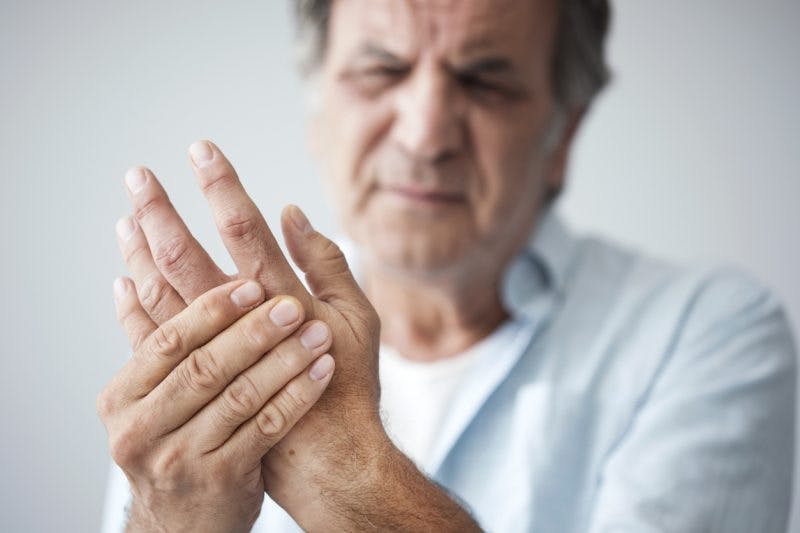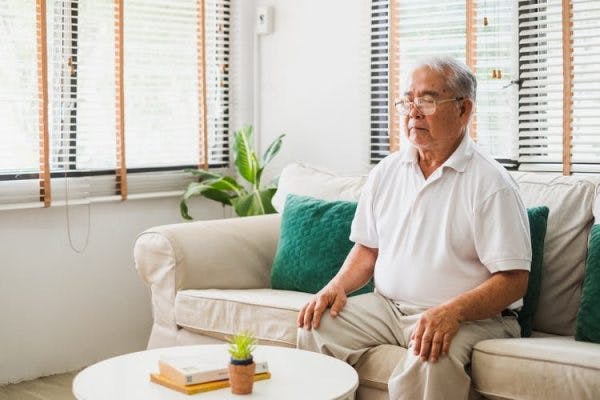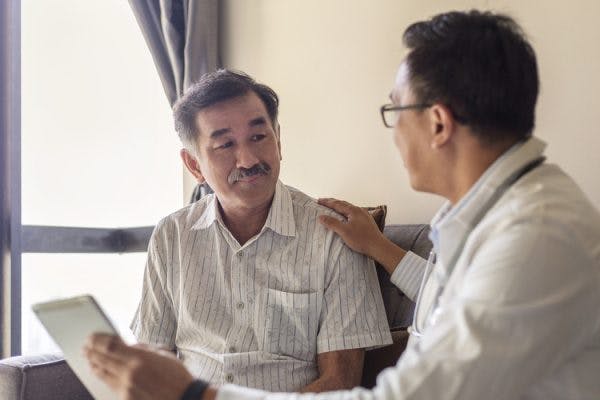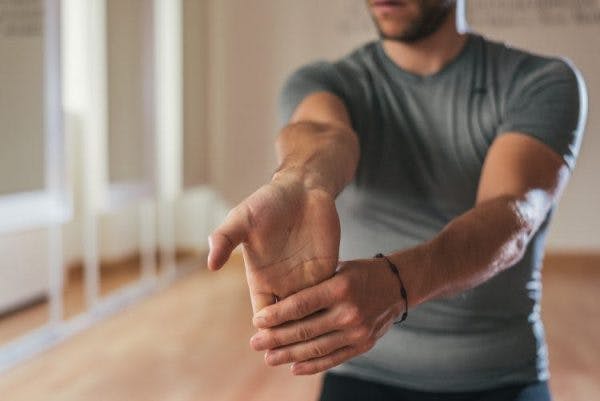Contractures after stroke are a common complication and are characterized by stiffening or tightening of muscles, joints, and tendons. Contractures can develop in any joint or muscle group in the body that is affected by spasticity, commonly involving the hand, elbow, hip, knee, and ankle.
Ultimately, this condition can affect your ability to perform functional activities including walking, transferring between surfaces, and self-care tasks such dressing or bathing. To help prevent and reverse contractures after stroke, it helps to understand why spasticity occurs and how these contractures develop. In this article we will discuss the causes of contractures as well as the best rehabilitation methods to prevent or address this complication.
Causes of Contractures After Stroke
Contractures involve extreme stiffness of muscles, joints, or connective tissue and often result in decreased range of motion. Following a stroke, damage to the brain and associated motor pathways inhibits purposeful muscle activation. As a result, voluntary movement of the associated limb is restricted and active motion is decreased. This means involved limbs are often less mobile after stroke.
Additionally, stroke often leads to an abnormal increase in muscle tone or contraction, known as spasticity. This excess muscle contraction, or spasm, causes muscles to become stiff and tight over time.
Spasticity is best understood as a miscommunication problem between the brain and the muscles. When a stroke has damaged the brain’s motor neurons that communicate with your affected muscles, these neurons misfire and the muscles spasm in response.
When spasticity is left unmanaged, contractures of the muscles and joints can develop. For example, the presence of spasticity in the hand after stroke can cause the fingers and wrist to curl inward. This causes the hand to remain clenched in a tight fist, resulting in a hand contracture as the muscles, tendons, and joints become stiff over time.
Rehabilitation and Treatment for Contractures After Stroke
According to the American Stroke Association, between 25-43% of survivors experience spasticity within the first year after their stroke. Risk of developing contractures increases when spasticity is left unmanaged and can lead to numerous functional deficits. Contractures and spasticity can also be painful and negatively affect quality of life.
Fortunately, there is a variety of rehabilitation methods that can be used to address spasticity and contractures. Although this requires consistency and dedication, you can reverse or prevent contractures after stroke by participating in consistent daily rehab. Some of the most common treatment methods for contractures after stroke include:
1. Stretching
One of the best ways to reduce the risk of developing contractures is to perform regular stretching. Frequent, gentle stretching of the affected muscles allows these muscles to elongate, especially when the stretch is held for at least 15-30 seconds. This can prevent or reverse shortening of the muscles and lessen the risk of developing contractures.
Stretching can be performed in a variety of ways. For example, you can perform active or passive stretching independently. Active stretching involves moving into a position of stretch with only muscle activation. On the other hand, passive stretching is performed by allowing the muscles to stay relaxed and using external force, such as another body part, to achieve the position of stretch.
Additionally, stretching can be performed with the help of a caregiver or friend as well as by using adaptive equipment such as a strap or cane. Splints and orthoses can also be used to help achieve low-load, long-duration stretching, which we will discuss later in this article.
2. Range of Motion Exercises
Similar to stretching, gentle range of motion exercises are a necessary piece of rehab to help avoid contractures after stroke. Taking joints through their full range of motion will allow connective tissue to lengthen, increase blood flow, and help decrease joint stiffness. This will improve overall mobility and can also decrease the risk of developing other complications such as frozen shoulder.
Even if your active mobility is limited after stroke, range of motion can still be performed passively. You can perform passive range of motion independently by using your non-affected side or you can enlist the help of a therapist or caregiver.
Although you may not be moving the muscles or joints of your own volition, passive exercise still helps reduce stiffness and prevent complications. It will take time to see results, but if you put in consistent work, your contractures can improve and increased mobility will follow.
3. Physical Exercise
Getting frequent physical exercise is another great way to help reduce or prevent contractures after stroke. Engaging muscles, including tight muscles, encourages improvements in range of motion and strength. This is especially true for weight-bearing exercises such as walking or weight-shifting while propping yourself up on your arms.
Additionally, exercise helps promote neuroplasticity, or rewiring the brain, which is the primary goal of stroke rehabilitation. The more you practice stroke exercises, the more your brain will improve the ability to correctly send motor signals to your affected muscles. As this communication is restored, mobility will progress, and contractures can also improve as a result.
Want 25 pages of stroke recovery exercises in a PDF? Click here to download our free Stroke Rehab Exercise ebook now (link opens a pop up for uninterrupted reading)
4. Optimal Positioning
In the early stages of stroke rehab, mobility is often limited. Consequently, many survivors spend a significant amount of time sitting or lying down. Being stationary in these positions for a prolonged period of time can lead to shortening of the muscles and, eventually, contracture. One excellent way to help avoid contractures after stroke is to be mindful of positioning.
It is important to change body position frequently to allow muscles to lengthen and stretch. For example, long periods of sitting can cause muscles of the hips to become tight and inwardly rotated. Laying completely flat with a pillow between the knees or spending time on your stomach can help stretch these hip muscles and improve mobility. Your physical or occupational therapist can help you find the best positioning techniques for your specific needs.
5. Electrical Stimulation
Electrical stimulation is a rehabilitation method used to treat spasticity and promote muscle engagement after stroke. This technique involves applying electrical currents to the affected muscles via electrodes on the skin. This stimulation helps to engage muscle and is useful for providing input to the brain and encouraging rewiring of motor pathways.
Much like physical exercise, muscle activation performed with the help of electrical stimulation can help reduce spasticity and muscle tension. Patients will see the best results by combining electrical stimulation with rehabilitation exercise, especially after stroke.
6. Botox
If spasticity and contracture are concerns during your recovery journey, your doctor may recommend spasticity-reducing treatments like Botox. This drug is a nerve-blocker that can be injected into specific muscles to temporarily relieve spasticity, allowing these spastic muscles to relax.
Although Botox is a temporary treatment, it can provide a “window of opportunity” to make progress with rehabilitation exercises. While the muscles are relaxed, stretching and strengthening gains can be made to help decrease contracture and promote lasting improvement in mobility. In addition to Botox, there are oral medications that can help address spasticity, so it is important to talk with your doctor about the right treatment for your specific needs.
7. Rehab Technology

When patients pursue stroke rehabilitation at home, it can be difficult to stay motivated to exercise daily. Repetition and range of motion are critical for increasing post-stroke mobility and improving function. Since consistency is the key to optimal results, rehab devices can help survivors stay engaged and maximize their outcome.
Home therapy tools like Flint Rehab’s FitMi help patients with severe spasticity regain mobility by encouraging high repetition of rehab exercises. This high repetition promotes neuroplasticity, and these exercises can encourage range of motion and strength gains. Even patients with hand contracture have reported remarkable improvement after using FitMi for just a couple months.
8. Orthoses
Orthoses include splints and props that are custom fitted to support and gently stretch the affected muscles and joints. These are often provided to address hand and wrist contractures by providing optimal positioning and light, long-duration stretch. Additionally, orthoses can be provided for other joints of the body to address specific impairments. An orthosis might be recommended by your therapist and will be adjusted to best suit your needs.
9. Surgery
Some contractures can be painful and may severely affect mobility and quality of life. These cases sometimes require surgery to reduce severity and improve range of motion. Surgery is often a last-resort intervention, but your physician may recommend this if a contracture is advanced and is limiting your function.
Surgical intervention for contractures involves the lengthening or release of a contracted muscle or tendon and is generally followed by physical or occupational therapy. This is because therapy is often needed to help maintain range of motion improvements achieved by the surgery.
Addressing Contractures After Stroke
Contractures affect many survivors and can be a serious complication after stroke. The presence of contractures can dramatically reduce range of motion and impair mobility, negatively affecting quality of life. Fortunately, there are many ways to address contractures or prevent them from developing.
Effective treatments to help reduce or prevent contractures include stretching, range of motion, exercise, electrical stimulation, and the use of orthoses or rehab devices. During the early stages of recovery after stroke, staying mindful of positioning can be an excellent contracture-prevention technique. In some cases, Botox or surgical intervention may be necessary to address severe contractures.
Preventing or reducing contractures requires dedication and consistency to achieve positive results. Your rehab team can help you create a plan that addresses your specific needs and helps you get back on the road to recovery.










